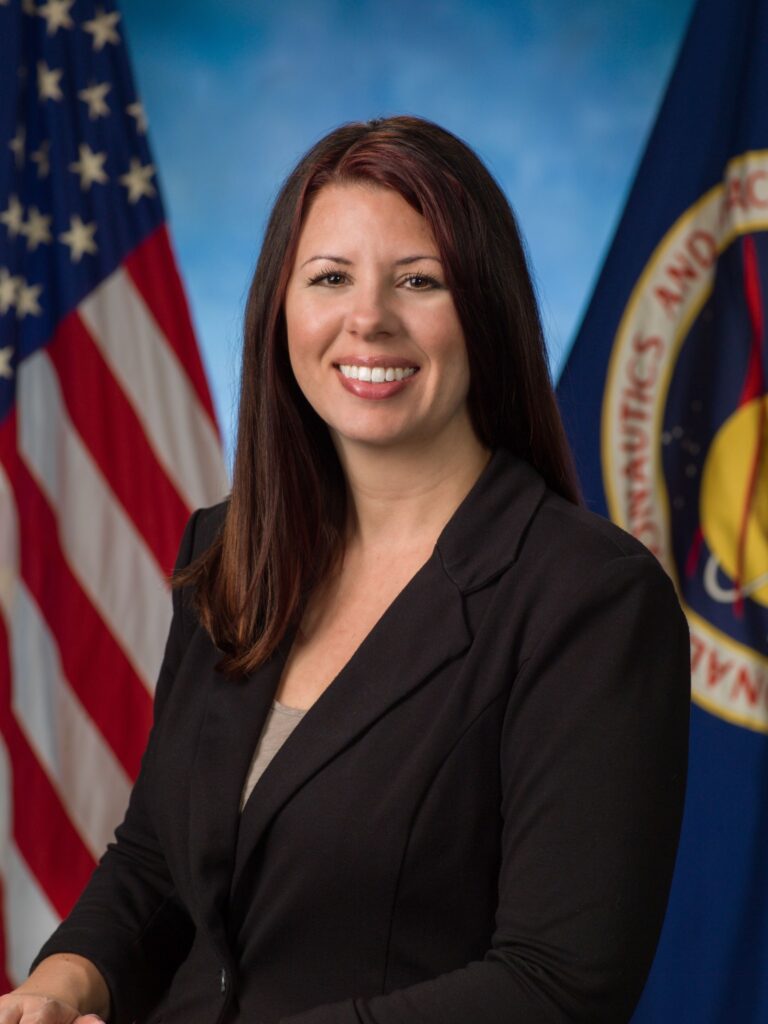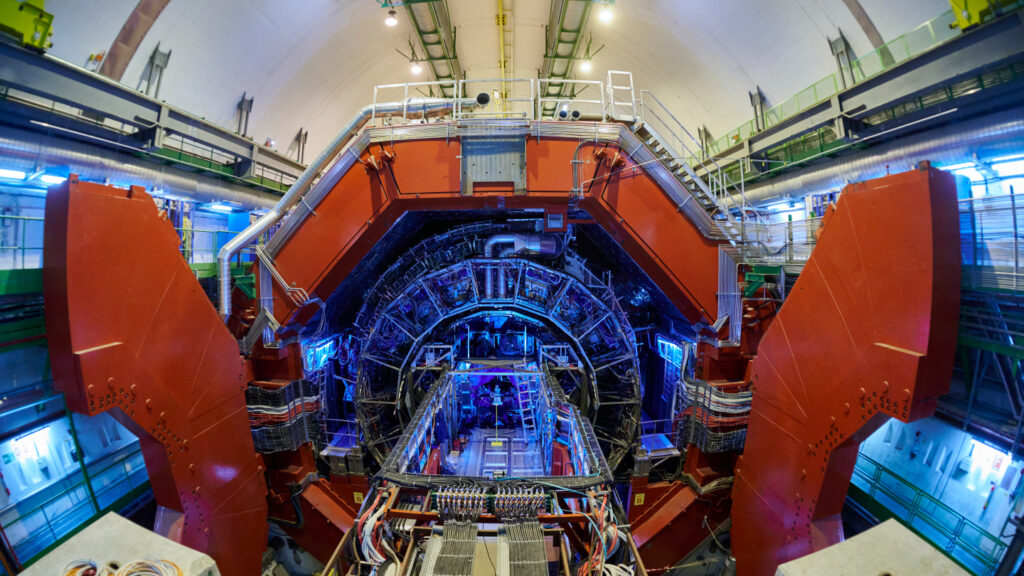Thomas Zurbuchen has ridden off into the sunset.
Zurbuchen, affectionately known as Dr. Z, stepped down as head of NASA’s Science Mission Directorate on Dec. 31. He had served in the post for six years, a longer continuous term than that of any of his predecessors.
Dr. Z’s tenure was incredibly eventful, packed with high-profile science and exploration successes. In 2021, for example, NASA landed the life-hunting, sample-collecting Perseverance rover on Mars and launched the $10 billion James Webb Space Telescope (JWST) to peer farther back into the universe’s history than any mission ever had. And this past September, the agency’s Double Asteroid Redirection Test successfully slammed a probe into a space rock far from Earth, demonstrating a deflection method humanity may need to employ someday to save our skins.
In September, when he announced his decision to step down, Dr. Z explained that he was ready for a change, and that NASA would benefit from some new blood coming in. He also said he wasn’t sure where the looming fork in the road would take him; he needed more time for reflection, and time would be decidedly scarce until he stepped away from the job.
Space.com caught up with Dr. Z in October to discuss his time as NASA’s science chief — his favorite missions, the advice he’d give to his successors and the incredible growth of the space community over the past few years. The following conversation has been edited for length.
In photos: The James Webb Space Telescope’s first pictures
Space.com: I know this is a big question, but what do you make of your six years doing this job? What are your overall impressions?
Thomas Zurbuchen: I would talk about it in two ways. The first one is the personal side, and the second is the community side. It turns out the second one matters more, but I’m less clear about that, because I think it tends to be that history proves what is the right answer. There are other opinions, so mine kind of matters less.
I’m in awe of having the front-window view of all of science. I get to see the first picture ever taken on a mission — in the hallway, somebody’s handing it to me. I’ve just been in awe of the amazing power of space and the amazing power of science to really inspire and to excite. So that’s kind of my personal view.
I think on the community side, what we have experienced in the last six years is an enormous growth in many different dimensions. If you take any six-year period, you would be hard-pressed in the history of NASA seeing one that, as an aggregate, created more success. Of course, that’s not because of me, certainly, alone. It has to do with the support that we’ve gotten from Congress, from the various White Houses, and also the execution by industry-government teams.
Space.com: You were steering the ship when a lot of very high-profile missions were developed and launched. Do you have any particular favorites?
Zurbuchen: I want to mention JWST, because what we saw in the final years [of development] and the deployment — I have not found a single person that expected it to go as well as it did. I’ve not found anybody, and I interviewed everybody. I actually kind of tended to be a little bit more pessimistic than some of the people on the team, which was perfectly fine.
Think of it as having an 18-hole golf course [and sinking] hole in one after hole in one. That’s what the team did here at the end. Now, I want to also hasten to say: We didn’t start there. That first year I got there, we had a little bit of an accident. Staying with the golf example, [it was] like breaking every single driver and losing the ball. We had some real challenges. But the point is, look at what they did. I will never forget that. I’m just so proud. It’s like a sports team: On Sunday, you know how good the team is, not how hard they train. And look at this team: It stunned the whole world.
Another mission I want to mention that I just love and I think about all the time is the GOES [weather satellite] series. GOES 16 was the first mission I launched in my job and, for what it’s worth, was the first launch I ever saw in person. Every time I look at their forecasts — and especially when I look at hurricane forecasts — I know that this mission that we launched together and built together with our cross agency partner, NOAA [the U.S. National Oceanic and Atmospheric Administration], is in fact changing the lives of citizens. For me, that’s just empowering.
And of course, landing on Mars. There aren’t many thrills that are more scary and also more exciting — and seeing the first image show up after you were sweating blood back there. We did that twice since I’ve been on the job, one on InSight and the other one on Perseverance.
Related: 12 amazing photos from Perseverance’s 1st year on Mars
Space.com: I’ve been on this job for more than a decade now, and one thing I’ve noticed is the huge public interest in space and space science now — it’s grown so much. To what do you attribute that? And how much of that is a goal of NASA’s? Obviously, you do science and exploration first, but outreach and engagement are essential to the overall mission.
Zurbuchen: We’ve seen this growth, and we’re excited about it. The way I think about it is, what I really seek to do is inspiration. The work that we do, science, is all about understanding nature in a new and better way. Nature is amazing, right? I think of nature in a very similar way that many people do, frankly, when they talk about their religious beliefs — they think about something that’s really important and bigger than themselves. I think that way of nature.
When you listen to children — or grown-ups who behave like children, which is the right way to behave — that curiosity, that understanding, is really inspiring. That’s one thing. And the second one is seeing teams doing the impossible. That’s also inspiring. We have both [at NASA], especially if you bring diverse teams together where many people see themselves, and we’re better off. And again, I don’t want to take credit — we have a much stronger social media presence. We use different channels, we use different partnerships; we have an amazing comms team, and I think our leaders actually understand that this matters and are spending the effort on it.
So that’s one piece. I think the other piece is the emergence of commercial space. The space discussion is more interesting [now] because there are more players, and some of them are really colorful characters. Change is interesting; it attracts attention. And for us, much of it has created enormous opportunities for science. Some of them have yet to bear out, but [there are] opportunities that relate, for example, to lower launch costs and the workforce in aerospace.
The way I always think about it is, I live through the lives of my students that were in my classroom 10 years ago or so. They’re out there leading these things. Companies that they started, some of them that they joined as well as some of the other companies that have been with us for a while — they’ve also reinvented themselves. So I think that’s another part of that energy. That’s why it’s so important that we don’t define what we do kind of in separation from that — you want to talk about it from the perspective of the entire community. We’re excited about these new players as well as some of the other ones.
Space.com: What sort of advice would you give to your successors? How can they keep NASA science growing and moving in the right direction?
Zurbuchen: In the first speeches that I gave when I took the job, I said there are three priorities here. The first priority is, build the best team. And the best team is not the most experienced, by the way. There’s experience there, but there’s also new thought, there are new ideas; there’s diversity built around it. And gain the trust of that team. If you can do that, you can delegate a lot of stuff.
The second one is, recognize that many of the missions you’re going to work on are already in the water. They’re moving forward, and your job is to do a great job and trust. Trust is absolutely critical for all stakeholders; do the best job in making decisions and moving it forward. So, execute; focus on programmatic performance, not just technical performance. Both matter.
The third one is, develop strategic insights. Look at the pattern, what is changing, and take advantage of opportunities. There are new spacecraft-as-a-service type of models; I think that’s really interesting. There are new ideas that are focused on much faster development. I think we have been too slow in some instances.
But whatever the ideas are, the point is, focus on number one and number two first. You’re going to want to learn from the community overall to get the final advice. And when you do all of these things, think of community with a capital “C.” It’s not just people who are on your floor, or in NASA headquarters. It’s also the company people out there, the academics, the startup community, the funding community, the government stakeholders, the White House stakeholders. Really make sure that they understand what’s happening and bring them on board.

Space.com: One thing I’ve noticed about your tenure is that you’ve sought to normalize the search for alien life and to make that more a part of the mainstream scientific process. Astrobiology had been a little on the fringes, and it seems like you’ve really embraced that as a core NASA priority. We’ve seen that with Mars sample return, and with the recent effort to look into UAP [unidentified aerial phenomena]. Do you see that as something that you have overtly tried to do?
Zurbuchen: If you felt that was the case, I would be really proud of it, because I happen to believe it’s one of the most important things we could be working on. It’s also what people care about, and it actually matters to me what people think.
I do believe finding life elsewhere is absolutely critical as an objective. And by the way, even when I was here, I was part of an authorization law where we were given the task to do that. I was really glad to receive that task, and I’ve taken it seriously.
Related: The search for alien life (reference)
Space.com: Are there any things that I didn’t ask you about that you think it’s important to mention? Is there anything about your tenure over the last six years that you want to stress has been particularly important or particularly revelatory?
First, I want to just say how proud I am of the team we put together here, the leadership team. If you’ve paid attention, you realize it looks really different than it did before. You can really see the power of diversity and coming together, and I hope that people observe that and are encouraged.
I also want to tell you how excited I am about the growth of space in all domains — growth that I really hope we’ll see even more of. There’s much more possible. We’re taking observations of our own planet and turning it into actionable information that makes people’s lives better. A farmer gets more gain out of the work that they do in the field based on the information that we have. Over time, we’ve helped our good friends and cross-agency partners predict weather even better, because we understand the physics of clouds, for example. And so on.
There’s huge opportunity. And with the rapid changes that we see all around us, our entire research portfolio needs to be a lot more like the Manhattan Project than some kind of R&A [research and analysis] shop. For me, that comes from commercial partners and government partners coming together. If there’s anything I learned, and maybe my final point is, how many opportunities that are arising if people come together who are different from each other, if organizations come together that are different from each other.
Related stories:
Space.com: When you say it needs to be like the Manhattan Project: Is that because the threats that we’re facing — climate change, deforestation, those sorts of things — are existential, or potentially existential?
Zurbuchen: Basically, I would say that the difference between Earth science today and Earth science 30 years ago is that, 30 years ago, we knew from our models that we had decades for change, and to implement change. The change that we’re observing now happens on a short time relative to a decade. The timescale of change is fast enough, and affects humans enough, that the responsiveness needs to be a lot faster than what we have done in the past. That’s what I’m really talking about.
It’s like playing hockey — you need to skate where the puck is going to be, and stay agile as you learn how things are changing on the playing field. So, for me, that is really how Earth science is evolving. And what an opportunity to add value, not just on weather but also in so many of the other dimensions of life.
Mike Wall is the author of “Out There (opens in new tab)” (Grand Central Publishing, 2018; illustrated by Karl Tate), a book about the search for alien life. Follow him on Twitter @michaeldwall (opens in new tab). Follow us on Twitter @Spacedotcom (opens in new tab) and on Facebook (opens in new tab).


